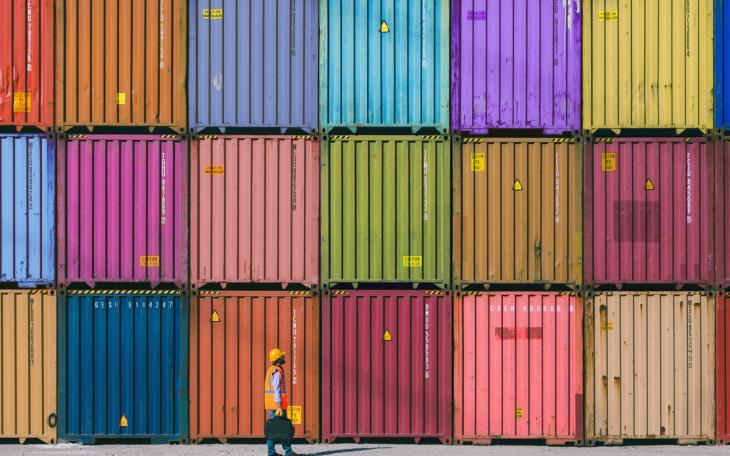#TradeTuesday: When is a sixty-seven percent cost reduction not good news?

At a time when every cost imaginable seems to be on a skyward trajectory, it may come as a surprise that one of the largest costs in global trade is down a staggering 67% this year. While seemingly good news, the headline figure potentially signals a gloomier picture for the global economy.
Last week, for the 34th consecutive week, the Drewry World Container Index - a global benchmark of the cost of sending Forty-Foot Equivalent-Unit (FEU) shipping containers carrying goods - decreased, this time by 3%. This downward slide represents a year-on-year drop of 66% when compared with the same time last year.
The drop comes on the back of the record-high prices witnessed during the global pandemic. As many of us can attest, during national lockdowns, with little else on the cards, we flocked to online sales – used that kettlebell lately? – which unsurprisingly drove the costs of getting that stuff – bread maker going well? - from manufacturing hubs in Asia to our front doors. All this demand, coupled with locked down port cities and under-staffed ships, saw shipping costs reach historic highs.
What did this mean in real terms? Pre-Covid, the Index showed the average price of sending a TEU from Asia to Europe or North America was around $1,420, only to shoot up and peak at $10,377 during the height of the supply chain crisis. For example, where it had previously cost about $2,600 to send a container of goods from a port in China to a port on the East Coast of the United States, exporters and importers were paying as high as $22,000 per TEU.
So, if numbers ballooned due to the pandemic and the host of knock-on effects it had on the shipping industry – is this a return to business as usual? Surely a 67% drop in a significant input cost for consumer goods can’t be a bad thing?
Unfortunately, while the dramatic price rise was driven by supply-side constraints, the fall is coming firmly from the demand side. As we are seemingly reminded on a daily basis, economies around the world are starting to wobble and consumer behaviour is changing. Biting inflation is seeing the demand for new products dip as many of us increasingly opt to forgo our wants and focus on immediate needs. To further exacerbate things, many larger retailers appear to be actively depleting inventories so as not to be caught holding stock, should demand continue falling.
Last month, exports from China – the world’s largest exporter of goods - significantly missed expectations, with month-on-month growth falling nearly 11%. While CNBC reports orders for cargo arriving from China into the United States– the world’s largest importerof goods - are expected to be down by 40% to 50% in November.
So why haven’t prices completely returned to, or gone below, the prices we saw before the pandemic? Like everything at the moment, the rising base costs that come with the practicalities of getting containers across oceans - capital, staff and fuel - are keeping prices inflated.
Given the distant horizons that manufacturers and retailers operate to, we may now be getting somewhat of an insight into what the future holds. Drewry predicts that while smaller, it will continue to see week-on-week reductions in rates in the coming weeks. All of which means, unfortunately, we're unlikely to experience following economic seas anytime soon.









